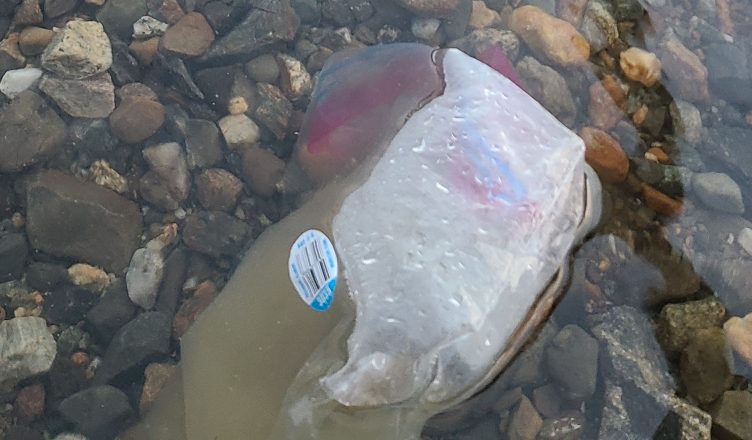It’s a time of celebration – graduations, weddings, festivals, and parties abound at this time of year. This is also when we start seeing more litter out on the water. The top culprits are balloons and plastic bags.
Since the early 2000s, we’ve been recording the litter we see from local whale watch boats. It’s not a big surprise that balloons and plastic bags are so prevalent. They’re lightweight, they can fill with air, travel far in the wind, and are often used outside during celebrations and picnics.
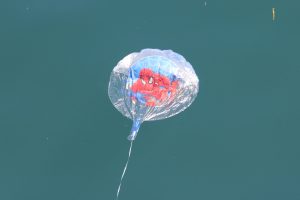
How is Litter Data Collected?
Aboard each whale watch (which usually run from mid-May through mid-October), we have observers stationed on the boat to collect data on marine life, litter, and other items of interest (e.g., seabirds in an area, other boats in an area we’re watching whales). When recording litter data, the observer records the type of litter, the location, its composition (e.g., plastic bag vs. paper bag), the quantity, and whether it is located near a whale (within approx. 30m).
Litter Data
The pie charts below give you a glimpse of the top litter items we’ve recorded in recent years, and the types of litter we’ve seen most often near whales. We can’t always identify the type of litter, especially if the boat is moving quickly, which is why there are a number of items marked as “unknown.”
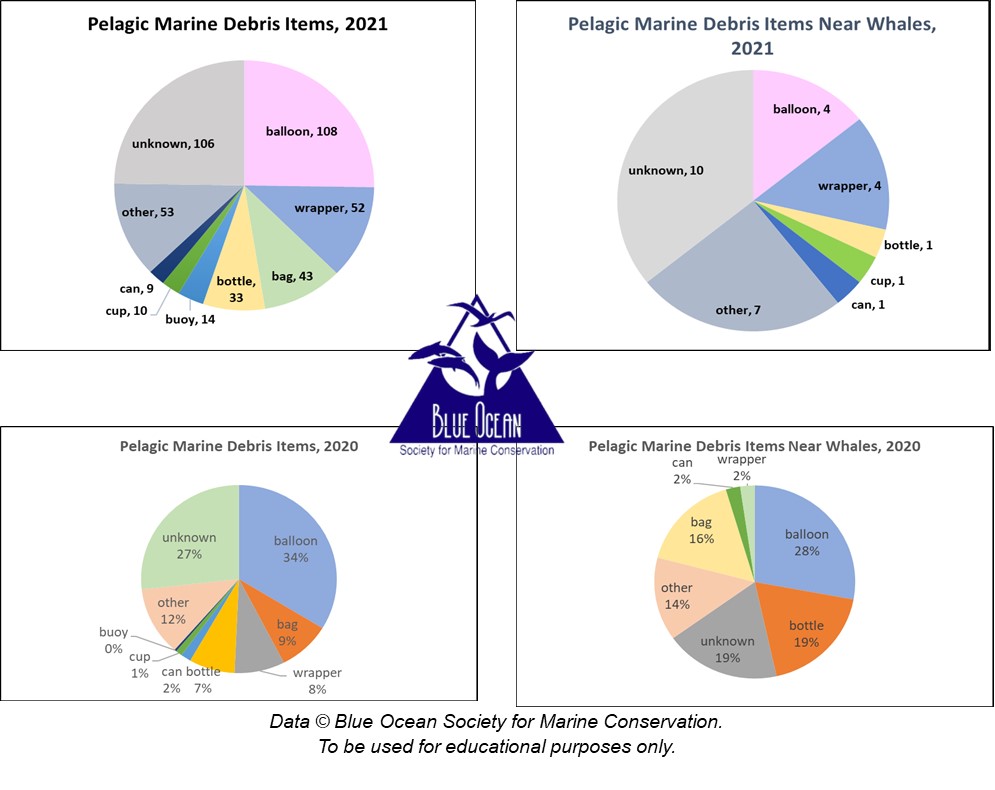
You can see from the pie charts that whales routinely swim near litter. The image below paints another picture. It shows the prevalence of litter across whale habitat by plotting all the sightings of balloons, bags, and Pinball the humpback whale in 2020.
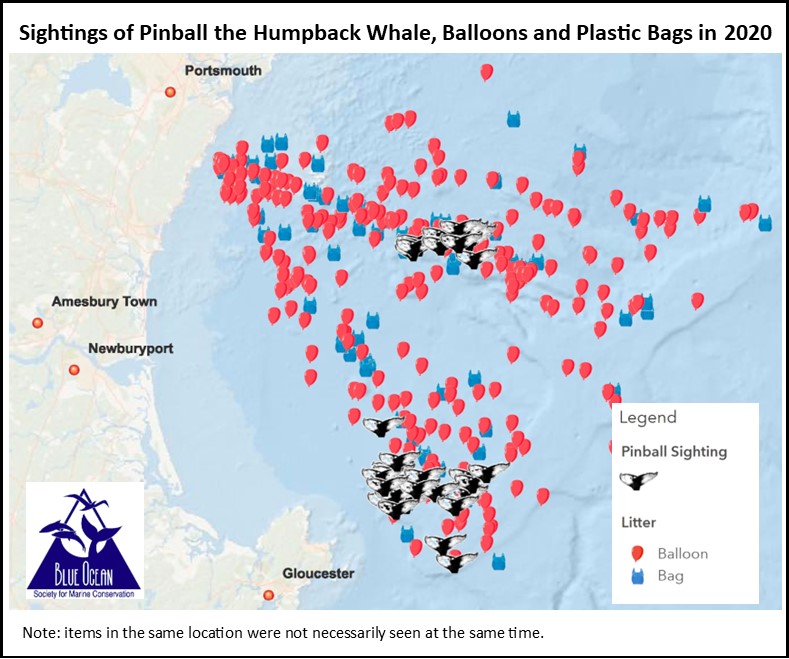
How Does Litter Harm Whales?
Litter can harm whales and other marine life in a variety of ways. Animals can get tangled in litter items such as balloon strings, plastic bags, and fishing. They can ingest litter by accident. Below, you can see an image of a leatherback turtle eating its natural prey – a jellyfish. But can you imagine how a turtle might easily mistake a bag or balloon for a jellyfish?
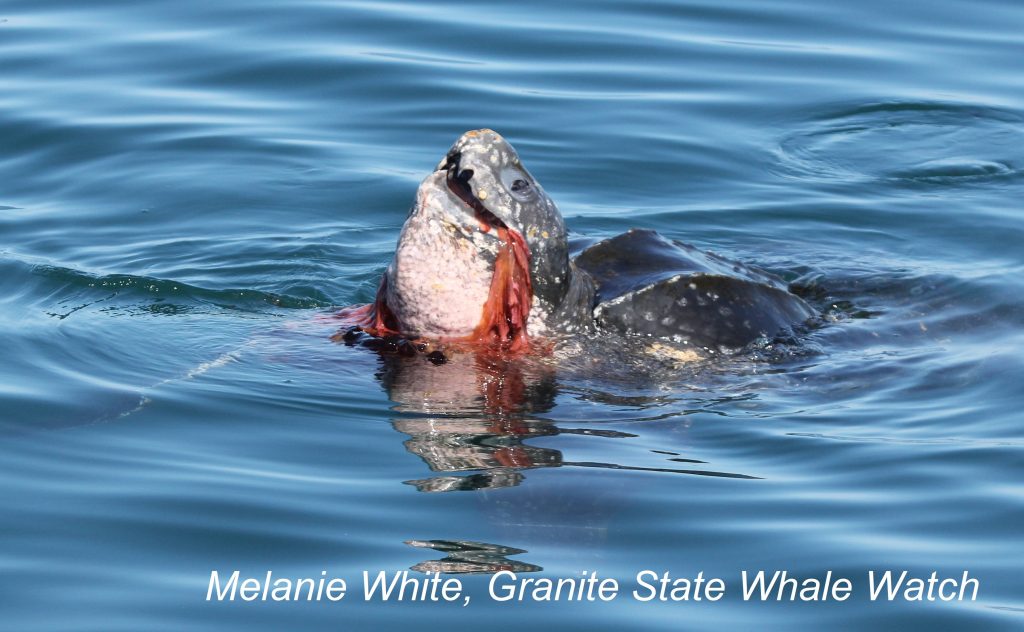
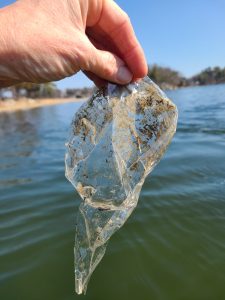
What Can You Do?
Want to stop litter from entering the ocean and impacting wildlife? Here are a few things you can do:
- Seek alternatives to balloons when celebrating, especially if your party is outdoors. Better alternatives include paper streamers or banners, flowers, paper chains, reusable lanterns and bubbles.
- Use reusable containers and utensils for your outings and celebrations, instead of plastic bags, cups, and utensils. In our office, we have reusable cups, plates, and utensils purchased inexpensively from a local thrift shop. We use these to serve food at our meetings and events.

